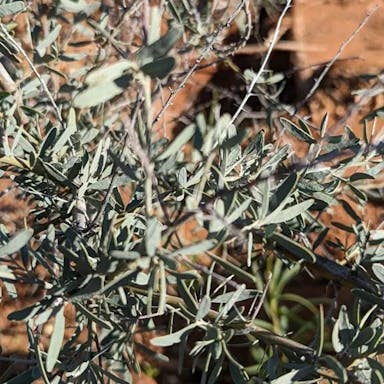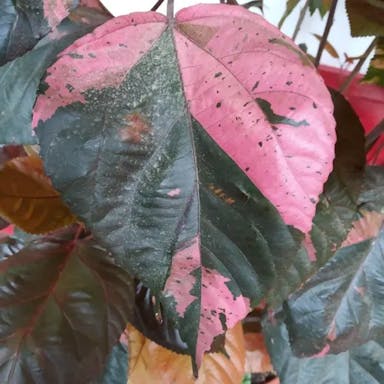Tom bush thrives in full sun to partial shade, requiring at least 6 hours of sunlight per day. It exhibits good cold tolerance, able to withstand temperatures as low as 20°F (-6°C). During hot summers, it is important to provide some afternoon shade to prevent leaf scorch. Tom bush prefers moderate temperatures between 65-75°F (18-24°C) but can tolerate higher temperatures with adequate watering. In winter, it is best to bring Tom bush indoors or provide protection if temperatures drop below freezing. It is essential to place Tom bush in a location with well-draining soil to prevent root rot. Overall, Tom bush is a hardy plant that thrives in sunny conditions with proper care and attention.
Tom bush
- Scientific name
- Chomelia spinosa
Basic Information
- Rubiaceae Family Chomelia Genus Tom bush Species
- Rubiaceae > Chomelia > Chomelia spinosa
- 83%
- The Completeness of This Encyclopedia
Please help us complete the encyclopedia, Terrarium is a encyclopedia service to be completed with everyone in the world. Currently, this page is 83% complete. For more information on how to contribute, please click here.
- Shrub
- Height
- Flower Color
- Leaf Color
- Anthesis
- Sunlight Exposure
Full Sun Long hours of sunlight from morning to afternoon Partial Shade A location in the shade of a tree or where either the morning or afternoon is shaded Full Shade A place where there is no direct sunlight
- Hardiness Zones
This is an indicator to know to which zone each plant can winter. Knowing the zone of each plant gives you an idea of the cold temperature resistance when grown in the ground without a roof. 2: -42.7 to -40.0 3: -39.9 to -34.4 4: -34.3 to -28.9 5: -28.8 to -23.3 6: -23.2 to -17.8 7: -17.7 to -12.2 8: -12.1 to -6.7 9: -6.6 to -1.1 10: -1.0 to 4.4 11: 4.5 to 10.0
- Cold resistance
- Heat resistance
- Habitat of origin
- Growth Rate
What is Tom bush (Chomelia spinosa)?
What is Tom bush (Chomelia spinosa)
Flower meaning
Tom bush thrives in well-drained soil with a pH level between 6.0 and 7.0. It requires a balanced fertilizer with an N-P-K ratio of 10-10-10 for optimal growth. Fertilizer should be applied in early spring before new growth begins, and again in mid-summer to support flowering. Apply 1 tablespoon of fertilizer per square foot of soil, avoiding direct contact with the plant. Regularly check the soil quality to ensure proper drainage and aeration. Avoid over-fertilization, as it can lead to nutrient imbalances.
Calendar of Tom bush (Chomelia spinosa)
Calendar
The flower language commonly used in America for the plant called Tom bush includes: - Admiration - Strength - Resilience One typical example is: - Admiration: Tom bush symbolizes admiration for someone's strength and resilience in facing challenges. Birth flowers: - January: Carnation - February: Violet - March: Daffodil - April: Daisy - May: Lily of the Valley - June: Rose - July: Larkspur - August: Gladiolus - September: Aster - October: Marigold - November: Chrysanthemum - December: Poinsettia
How to grow Tom bush (Chomelia spinosa)
Watering
Tom bush requires regular pruning to maintain its shape, promote new growth, and improve overall plant health. Pruning is necessary to remove dead or diseased branches, control size, and encourage flowering. The best time to prune Tom bush is in late winter or early spring before new growth begins. When pruning, use sharp, clean tools to make precise cuts just above a leaf node or lateral branch. Remove any crossing or rubbing branches to prevent damage. After pruning, water the plant thoroughly and apply a balanced fertilizer to support recovery and new growth. Regular pruning will help Tom bush thrive and remain an attractive addition to your garden.
Soil and Fertilizer
Tom bush can be propagated through seeds, cuttings, and division. Seeds should be sown in well-draining soil, kept moist, and placed in a warm, sunny location. For cuttings, take a healthy stem cutting, remove lower leaves, dip in rooting hormone, and plant in a pot with well-draining soil. Division involves separating the plant into smaller sections with roots attached and replanting them. To ensure successful propagation, it is recommended to use a combination of methods to increase the chances of success. Harvest seeds when they are mature and dry for sowing in the next growing season.
Sunlight and Place
Tom bush is best suited for potted planting due to its compact size and adaptability to container growth. When potting, choose a well-draining potting mix to prevent waterlogging. Ensure the pot has drainage holes to avoid root rot. When repotting, gently loosen the roots and place the plant in a slightly larger pot with fresh soil. Water thoroughly after repotting to help the plant establish in its new container. To prevent mishaping, rotate the pot occasionally to promote even growth. Regularly check for signs of overcrowding or root-bound conditions, and repot as needed to maintain the plant's health and vigor.
Advanced Information of Tom bush (Chomelia spinosa)
Pruning
Tom bush is susceptible to various pests and diseases, including aphids, spider mites, and powdery mildew. These pests can weaken the plant by sucking sap or causing damage to the leaves. Aphids are small insects that feed on the plant's sap, leading to stunted growth and distorted leaves. Spider mites are tiny arachnids that also feed on sap, causing yellow stippling on leaves. Powdery mildew is a fungal disease that appears as a white powdery substance on the leaves, inhibiting photosynthesis. To prevent these issues, regular inspection of the plant for early detection is crucial. Maintaining proper air circulation around the plant and avoiding overhead watering can help prevent powdery mildew. Additionally, using insecticidal soap or neem oil can help control aphids and spider mites.
Planting and Harvest
Tom bush typically blooms in the spring season in the United States. The flowers are at their best during the month of April. Blooming usually occurs once a year, lasting for about 2-3 weeks. To extend the blooming period, ensure the plant receives adequate sunlight, water, and nutrients. Pruning faded flowers can also promote continuous blooming.
Propagation
Tom bush, scientifically known as Leucophyllum frutescens, offers several varieties for selection. 'Green Cloud' features vibrant green foliage and purple flowers, ideal for hot climates. 'Thunder Cloud' displays silver-gray leaves and deep purple blooms, suitable for dry conditions. 'Compacta' is a smaller cultivar with dense foliage and light purple flowers, perfect for smaller spaces. When choosing seeds, opt for those from reputable suppliers to ensure quality and authenticity. Select seedlings with healthy green leaves and sturdy stems, avoiding any signs of disease or stress. Prioritize well-established plants with a strong root system for successful growth.
Pests and Diseases
Tom bush, scientifically known as Chomelia spinosa, is a flowering plant native to tropical regions of Africa and Asia. This plant is characterized by its spiny branches and glossy, dark green leaves. The flowers of Chomelia spinosa are small, white, and fragrant, adding to its ornamental value. The flowers typically bloom in clusters, attracting pollinators like bees and butterflies. The fruit of Chomelia spinosa is a small, round berry that turns red when ripe. This plant is relatively easy to grow, requiring well-draining soil and partial shade to thrive. Chomelia spinosa is often cultivated for its attractive foliage and delicate flowers, making it a popular choice for gardens and landscaping. There are several varieties of Chomelia spinosa, each with unique characteristics and adaptations to different growing conditions.
Habitat of Tom bush (Chomelia spinosa)
Habitat
Toxicity of Tom bush (Chomelia spinosa)
Health Benefits
- edible
- Unknown
- Toxic
- Unknown
NO DATA
Toxic for dogs and cats
NO DATA
Q&A of Tom bush (Chomelia spinosa)
- Is there a recommended way to choose Tom bush?
For the plant named Tom bush, the optimal frequency of watering is once every 7-10 days during the growing season. This frequency may vary depending on factors such as temperature, humidity, and soil type. During the dormant season, reduce watering to once every 2-3 weeks to prevent overwatering. It is crucial to allow the soil to dry out slightly between waterings to avoid root rot. Ensure that the soil is well-draining to prevent waterlogged conditions. Water the plant thoroughly, allowing excess water to drain out of the pot to avoid water accumulation at the roots. Monitor the soil humidity by inserting a finger into the soil up to 1-2 inches to determine if watering is necessary.











